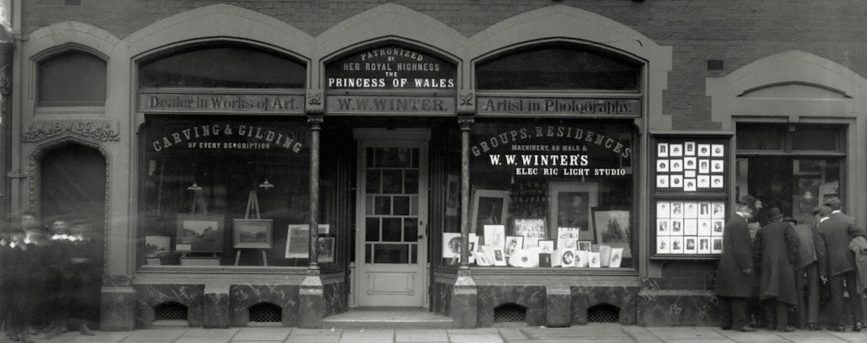This weeks post from Joanna gives us an insight to the growth of Derby on what would have originally been the Castlefields estate.
Looking at maps and plans has always been a big part of my research, ‘the where’ aspect helps to fit another piece into the jigsaw of the history of the Winter’s business.
The part of Derby known as Litchurch was originally its own place and mentioned in the Domesday Book. Records show that by 1841 there were only 855 persons recorded. By 1877 this had risen to nearly 70,000 due to the selling of the Castlefields estate, the subsequent development of the area and the coming of the railway. The Litchurch Local Board was set up in 1860. Mr Winter became a member of this, playing an active role in the management of the area. The area was finally integrated into Derby under the Local Government Act of 1877. Mr Winter was then elected to the Council as member for the Litchurch Ward.
The coming of the railway triggered the development of the area. This major railway junction made travel to and from Derby to the north, south, east and west much easier. It also brought about the Railway Village built to house railway workers, and manufacturing industries on a big scale. Streets were laid out and the boom years began. Into this major expansion came Monsieur E. N. Charles. The buildings in Station Road, as Midland Road was then known, were under construction at the time of the 1851 Census but are clearly marked on the 1852 map commissioned by the Board of Health. It is here that M. Charles had his premises. These buildings on the north side of Midland Road today between London Road and Carrington Street are the original buildings. The same 1852 Board of Health map shows no building at all on the south side, the site of the present Winter’s premises, between London Road and the Midland Hotel (opened 1843). It is marked as pasture land in the owned by J. Cuff, manager of the hotel at the time. Development on this side began with the corner of London Road towards the end of the 1850s.
The premises housing the original studio remained as part of the Winter’s business into the 20th Century. The photograph of the framing room on display in an upstairs room at the present studio is actually the front upstairs room of these premises. The roofline and chimney of the present studio can be seen through the window. The framer is Mr Samuel Wain who worked at W.W. Winter’s from 1889 to 1914.
I hope to continue with the story of the development of Midland Road next time.
If Joanna’s research has whet your appetite for more land history there is an interesting article in Country Image Magazine about the history of the Castlefields, now known as Castleward in Derby.
